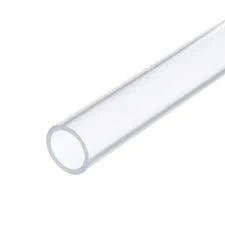10월 . 30, 2024 10:39 Back to list
welding rod types
Understanding Welding Rod Types
Welding is a vital process in various industries, from construction to automotive. At the heart of this process is the welding rod, also known as an electrode, which serves to join materials together by melting and fusing them. The type of welding rod used can significantly affect the quality, strength, and durability of the weld. In this article, we will explore the various types of welding rods, their applications, and key characteristics.
1. Shielded Metal Arc Welding (SMAW) Rods
SMAW rods, commonly referred to as stick electrodes, are one of the most traditional types of welding rods. They are versatile, easy to use, and suitable for various applications, including structural steel and pipeline welding. SMAW rods come in different classifications, denoted by a series of numbers and letters, which indicate the type of material and the specific characteristics of the rod, such as tensile strength and coating type. The coating on these rods provides a protective gas shield during the welding process, which helps to prevent oxidation and contamination of the weld.
2. Gas Metal Arc Welding (GMAW) Wire
In contrast to SMAW rods, GMAW employs a continuous wire feed as the electrode, which allows for faster welding speeds and greater efficiency. This type of welding is commonly used in manufacturing and fabrication due to its ability to produce clean and strong welds with minimal spatter. GMAW wires are available in various alloys and can be used for both ferrous and non-ferrous metals. Additionally, GMAW can be used with or without shielding gas, making it adaptable to different welding environments.
welding rod types

3. Tungsten Inert Gas (TIG) Rods
TIG welding utilizes a non-consumable tungsten electrode, which is why it is often referred to as GTAW (Gas Tungsten Arc Welding). In this process, a separate filler rod is introduced to the molten pool when necessary. TIG welding is known for its precision and the high quality of its welds, making it ideal for applications that require intricate work, such as aerospace or artistic metal projects. The rods used in TIG welding are typically made of materials that match the base metal, ensuring a superior bond and finish.
4. Flux-Cored Arc Welding (FCAW) Rods
FCAW rods are designed with a hollow core filled with flux, which provides shielding during the welding process, similar to SMAW. This makes FCAW an excellent choice for outdoor welding where wind may disrupt the shielding gas. Flux-cored wires can be either self-shielding or gas-shielded, catering to various environmental conditions. FCAW is particularly favored in construction and heavy fabrication due to its high deposition rates and ability to weld thick materials.
Conclusion
Choosing the right welding rod is crucial for achieving a successful weld. Each type of rod has its unique characteristics and applications, making it essential to understand the requirements of your project before selecting the appropriate electrode. Whether using SMAW, GMAW, TIG, or FCAW, understanding the strengths and limitations of each type will ultimately lead to higher quality workmanship and long-lasting results.
-
Durable PP Rigid Sheet: Lightweight, Chemical Resistant Solutions
NewsAug.21,2025
-
PVC Grey Sheet for Extraction: Chemical Resistant & Durable
NewsAug.19,2025
-
Durable PVC Pipe Fittings for Plumbing & Irrigation Needs
NewsAug.18,2025
-
HDPE Steel Belt Reinforced Spiral Corrugated Pipe | High Strength
NewsAug.17,2025
-
HDPE Pipe Fittings: Durable, Leak-Proof Solutions
NewsAug.16,2025
-
Premium CPVC Sheet: High-Temp & Chemical Resistant Solutions
NewsAug.15,2025

